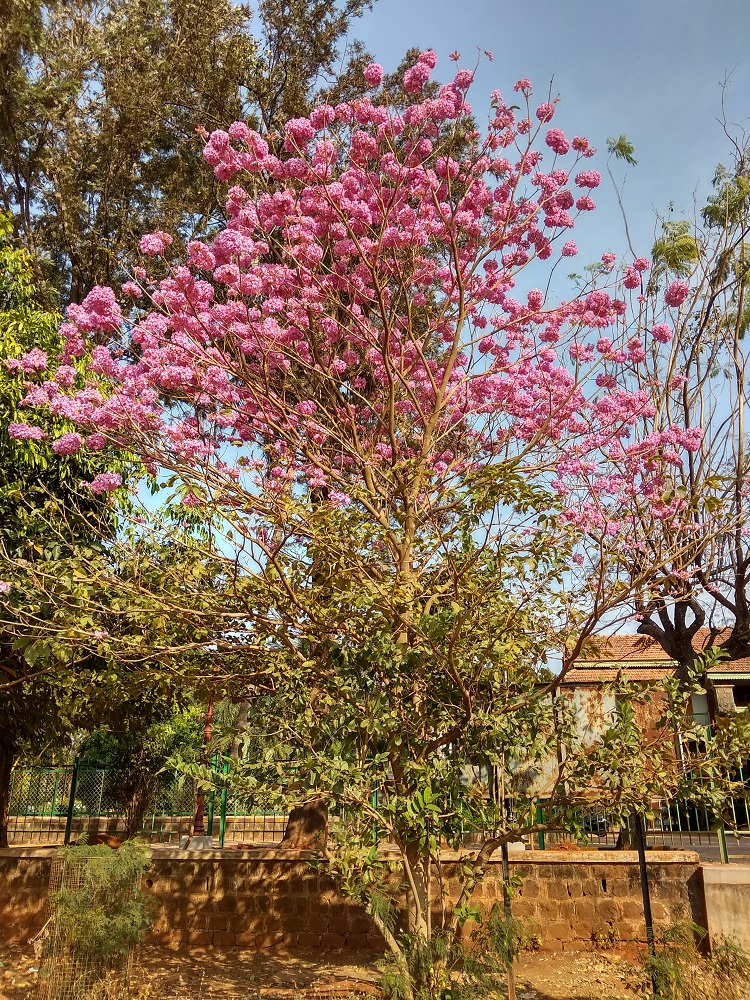Pink Trumpet Tree

Tabebuia impetiginosa
Summary
Scientific Classification
Kingdom: Plantae
Division: Angiospermae
Class: Dicotyledonae
Order: Lamiales
Family: Bignoniaceae
Genus: Tabebuia
Species: T.impetiginosa
Scientific Name: Tabebuia impetiginosa (Mart. ex DC.) Standl.
Common names
English: Pink Trumpet Tree.
Description
- Habit and Habitat: The pink lapacho is a rather large deciduous tree, with trunks sometimes reaching 8 dm width and 30 m height. Usually a third of that height is trunk, and two thirds are its longer branches. It has a large, globous, but often sparse canopy.
- Distribution: : Native tree of family Bignoniaceae of the Americas, distributed from northern Mexico south to northern Argentina.also distributed in Indian subcontinent.
- Morphology:
Leaf: Leaves are opposite and petiolate, 2 to 3 inches long, elliptic and lanceolate, with lightly serrated margins and pinnate venation. The leaves are palmately compound with usually 5 leaflets.
Inflorescence: Tabebuia always has a dichotomously branched inflorescence; never a central rachis as in Roseodendron.
Flowers: The flower is large, tubular shaped, its corolla is often pink or magenta, though exceptionally seen white, about 2 inches long.
Androecium: There are four stamens and a staminode.
Gynoecium: The ovary is linear, bilocular with many ovules biseriate in each locule.
Fruit: The fruit consists of a narrow dehiscent capsule.
Seeds: several winged seeds.
Flowering and Fruiting time: December to January. - Propagation: by seeds.
- Importance: It is also used as a honey plant, and widely planted as ornamental tree in landscaping gardens, public squares and boulevards due to its impressive and colorful appearance as it flowers. Well-known and popular, it is the national tree of Paraguay. It is also planted as a street tree in cities of India, like in Bangalore. It is also used as Ayurvedic medicine for treatment of various disease.
- Location: throughout Campus.
 Trees of GSS Project supported by Makerspace Belgaum Website concept and designe by
Trees of GSS Project supported by Makerspace Belgaum Website concept and designe by